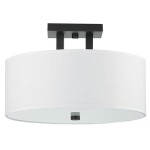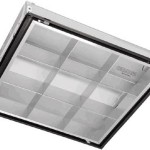Essential Aspects of Ceiling Lights Bulbs: A Comprehensive Guide
Ceiling lights are an integral part of any home, providing both illumination and ambiance. Choosing the right light bulbs for your ceiling lights is crucial to achieving the desired effect. Here's a comprehensive guide to help you understand the essential aspects of ceiling light bulbs:
Light Output: Lumens
Lumens measure the brightness of a light bulb. The higher the lumen value, the brighter the light. For general lighting in a room, aim for around 800-1000 lumens per 100 square feet. Task lighting, such as over a kitchen counter, may require higher lumen values (e.g., 1500-2000 lumens).
Color Temperature: Kelvin (K)
Color temperature refers to the "warmth" or "coolness" of light. It is measured in degrees Kelvin (K). Warmer light (e.g., 2700-3000K) creates a cozy atmosphere, while cooler light (e.g., 4000-5000K) promotes alertness and focus. For living rooms and bedrooms, warm light is often preferred, while cooler light is suitable for kitchens and workspaces.
Color Rendering Index (CRI)
CRI measures how accurately a light bulb renders colors. A higher CRI (e.g., 90+) results in more vibrant and natural colors. This is important for tasks where color accuracy is crucial, such as painting or food preparation.
Bulb Type
There are several types of ceiling light bulbs available, including:
- Incandescent: Traditional bulbs that produce light through a heated filament. They are relatively inexpensive but have low energy efficiency.
- Compact Fluorescent Lamp (CFL): More energy-efficient than incandescent bulbs, but they can have a slight delay in turning on.
- Light-Emitting Diode (LED): Highly energy-efficient bulbs with a long lifespan. They are often more expensive than other types but are becoming increasingly affordable.
Bulb Shape and Size
Light bulbs come in various shapes and sizes to fit different light fixtures. Common shapes include A-type (standard), G-type (globe), and BR-type (reflector). The size of the bulb is typically indicated by its diameter in millimeters (e.g., A19 for a 19mm diameter).
Dimmability
Dimmable light bulbs allow you to adjust the light output to create different atmospheres. They require a dimmer switch installed in the circuit. Ensure that the bulb you choose is compatible with your dimmer switch.
Energy Efficiency: Watts
Watts measure the power consumption of a light bulb. The higher the wattage, the more energy the bulb consumes. Energy-efficient bulbs, such as LEDs and CFLs, use less wattage to produce the same amount of light as incandescent bulbs.
Conclusion
Choosing the right ceiling light bulbs involves considering various aspects, including light output, color temperature, CRI, bulb type, shape and size, dimmability, and energy efficiency. By understanding these factors, you can select bulbs that meet your specific needs and create the desired ambiance in your home.

Light Bulbs Discover Now Eglo

The New Look In Ceiling Lights Hanging Light Bulb Fixtures Ideas Advice Lamps Plus

Cgc Piper Extra Large Silver Led Pendant Light Bulb Interiors

Lighting Guide How To Choose The Right Light Bulb For Each Lamp

Diffe Types Of Led Ceiling Lamps For Your Home Chint Blog

Wafer Lights Vs Can Everything You Should Know

Hanging Light Bulbs Ceiling Lamp Realistic Vector Vectors Graphicriver

Light Bulbs Hanging From Ceiling Vectors Graphicriver

Lighting Guide How To Choose The Right Light Bulb For Each Lamp

Ceiling Mounted White Off Led Light Bulb
Related Posts








